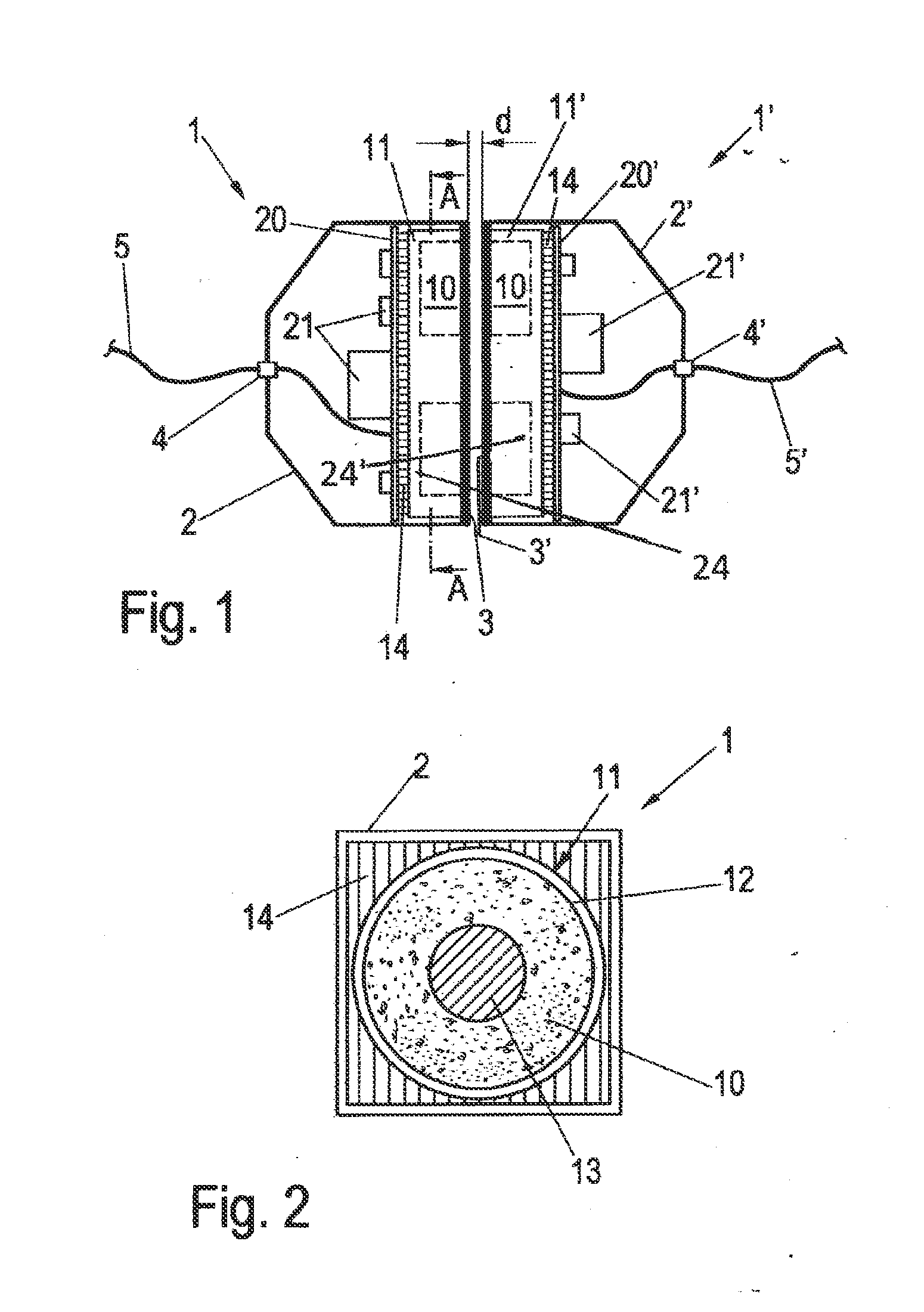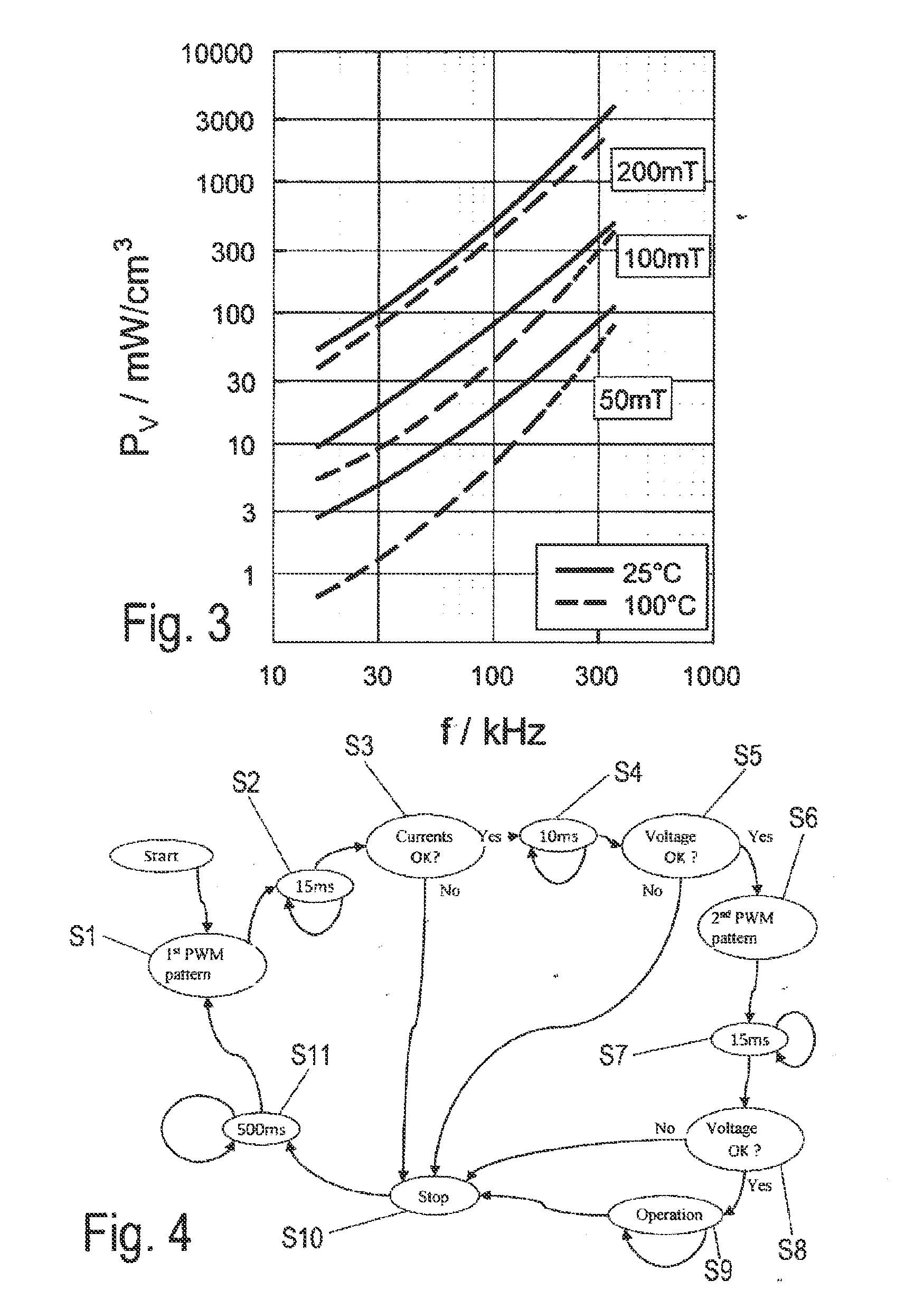Plug device for contact-free inductive energy transfer and operating method for such a plug device
- Summary
- Abstract
- Description
- Claims
- Application Information
AI Technical Summary
Benefits of technology
Problems solved by technology
Method used
Image
Examples
Embodiment Construction
[0022]Referring first more particularly to FIGS. 1 and 2, the connector arrangement of the present invention includes a pair of primary and secondary connector components 1 and 1′ provided with generally half-shell shaped housings 2, 2′ containing chambers that receive pot-shaped ferrite cores 11 and 11′, respectively. The housing chambers are closed by front plates 3 and 3′ that are parallel with the adjacent vertical faces of the cores when the components 1 and 1′ are arranged in spaced relation by the spacing distance d shown in FIG. 1. The core front faces contain annular recesses 24 and 24′ that define cylindrical central inner dome portions 13, 13′, and annular outer marginal wall portions 11, 11′. Arranged in the annular recesses, respectively, are annular coils 10 and 10′ that are connected with input and output cables 5 and 6 that extend through passages 4 and 4′ contained in the walls of the housings 2 and 2′ respectively. The coils 10 and 10′ can each be wound with an ind...
PUM
 Login to View More
Login to View More Abstract
Description
Claims
Application Information
 Login to View More
Login to View More - R&D
- Intellectual Property
- Life Sciences
- Materials
- Tech Scout
- Unparalleled Data Quality
- Higher Quality Content
- 60% Fewer Hallucinations
Browse by: Latest US Patents, China's latest patents, Technical Efficacy Thesaurus, Application Domain, Technology Topic, Popular Technical Reports.
© 2025 PatSnap. All rights reserved.Legal|Privacy policy|Modern Slavery Act Transparency Statement|Sitemap|About US| Contact US: help@patsnap.com



